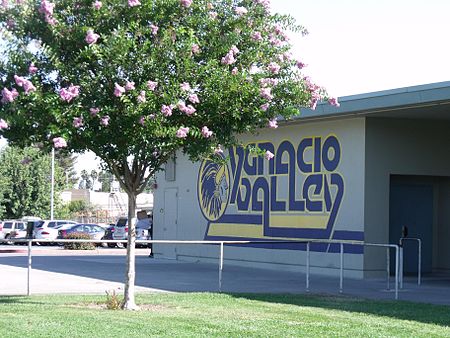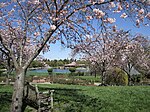Ygnacio Valley High School
1960 establishments in CaliforniaEducational institutions established in 1960High schools in Contra Costa County, CaliforniaMount Diablo Unified School DistrictPublic high schools in California

Ygnacio Valley High School (YVHS) is a public secondary school located in Concord, California, United States. It draws students from Concord as well as from the neighboring communities of Walnut Creek and Pleasant Hill. The school opened in 1962, and its first senior class graduated in 1964. Originally conceived as a temporary facility, the school currently carries an enrollment of over 1,500 total students for grades 9 through 12. When the nearby Northgate High School opened in 1974, YVHS lost approximately half its student body at the time. The school is part of the Mount Diablo Unified School District.
Excerpt from the Wikipedia article Ygnacio Valley High School (License: CC BY-SA 3.0, Authors, Images).Ygnacio Valley High School
Oak Grove Road, Concord
Geographical coordinates (GPS) Address Website External links Nearby Places Show on map
Geographical coordinates (GPS)
| Latitude | Longitude |
|---|---|
| N 37.933993 ° | E -122.025898 ° |
Address
Ygnacio Valley High School
Oak Grove Road 755
94518 Concord
California, United States
Open on Google Maps







